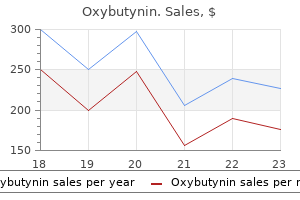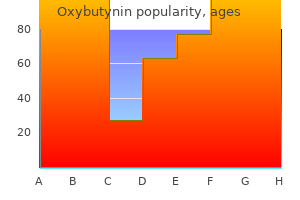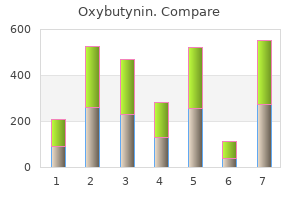| Product name | Per Pill | Savings | Per Pack | Order |
|---|---|---|---|---|
| 30 pills | $1.31 | $39.40 | ADD TO CART | |
| 60 pills | $1.13 | $10.74 | $78.79 $68.05 | ADD TO CART |
| 90 pills | $1.07 | $21.49 | $118.20 $96.71 | ADD TO CART |
| 120 pills | $1.04 | $32.23 | $157.59 $125.36 | ADD TO CART |
| 180 pills | $1.01 | $53.72 | $236.39 $182.67 | ADD TO CART |
| 270 pills | $0.99 | $85.96 | $354.59 $268.63 | ADD TO CART |
| 360 pills | $0.98 | $118.20 | $472.79 $354.59 | ADD TO CART |
| Product name | Per Pill | Savings | Per Pack | Order |
|---|---|---|---|---|
| 30 pills | $0.92 | $27.54 | ADD TO CART | |
| 60 pills | $0.78 | $8.41 | $55.08 $46.67 | ADD TO CART |
| 90 pills | $0.73 | $16.83 | $82.63 $65.80 | ADD TO CART |
| 120 pills | $0.71 | $25.24 | $110.17 $84.93 | ADD TO CART |
| 180 pills | $0.68 | $42.07 | $165.26 $123.19 | ADD TO CART |
| 270 pills | $0.67 | $67.30 | $247.88 $180.58 | ADD TO CART |
| 360 pills | $0.66 | $92.54 | $330.51 $237.97 | ADD TO CART |
"Order oxybutynin 5 mg mastercard, symptoms ulcer stomach".
E. Hurit, M.A., M.D., M.P.H.
Clinical Director, University of Miami Leonard M. Miller School of Medicine
Effect of sleep apnea and continuous positive airway pressure on cardiac structure and recurrence of atrial fibrillation symptoms of mono order on line oxybutynin. Prospective randomized evaluation of the watchman left atrial appendage closure device in patients with atrial fibrillation versus long-term warfarin therapy: The prevail trial treatment uterine fibroids discount oxybutynin 5 mg mastercard. Meta-analysis of continuous positive airway pressure as a therapy of atrial fibrillation in obstructive sleep apnea hair treatment generic 2.5 mg oxybutynin amex. Central sleep disordered breathing predicts incident atrial fibrillation in older males. American Heart Association Atrial Fibrillation Research Summit: a conference report from the American Heart Association. Successes in medical care as well as advances in prevention and public health have contributed to 3 sizable increases in longevity. In 1900 in various countries, the usual lifespan was 25 to 50 years, but it 4 has now increased throughout the world. In the United States, the number of people 65 years of age or older was barely 3 million in 1900, but it is now about 46 million, and it is expected to be almost 84 5 million by the year 2050. The subgroup of persons who are 85 years of age or older is the most rapidly increasing demographic group in the world. This means that there are a disproportionate number of hospitalizations, 9 procedures, and costs, as well as more use of health care resources, among the elderly. Aging is customarily measured in chronological years, but the broad concept of aging is significantly 1 more complex than years alone would indicate. Fundamental aspects of aging are determined by the mounting toll of biologic stresses over time (e. Although chronological years are immutable, other aspects of aging can often be modified. The abnormal molecular signals, sensing, and responses result in abnormal transcription, cell renewal, and proteostasis. These structural changes lead to functional alterations that result in widened pulse pressure. The increase in pulsatility leads to increased left ventricular load, chronic kidney disease, and vascular dementia. The arterial wall media thickens because of smooth muscle cell hypertrophy, extracellular matrix accumulation, and calcium deposition. Both oxidative stress and chronic low-grade inflammation are key mediators of the structural and functional changes in the arterial wall with aging (see also Chapter 44). Elevated oxidative stress also leads to enhanced protein oxidation, activation of inflammatory and endoplasmic reticulum stress responses, and apoptosis. As a result of structural and functional changes in the arterial walls, stiffening of large and medium- sized arteries occurs with aging, independent of disease. Left Ventricular Composition and Mass In younger adults, the heart is composed of approximately 25% cardiomyocytes and a complex structure of connective tissue. With aging there is a decrease in the total number of cardiomyocytes, likely due to 13 apoptosis, as well as an increase in their individual sizes (i. Within the connective tissue, the collagen content, fibrosis, and deposition of cardiac amyloid and lipofuscin all increase. Left Ventricular Wall Thickness, Cavity Size, and Shape Despite the absence of an increase in cardiac mass with aging, there is a significant increase in 13 myocardial thickness, particularly due to increased cardiomyocyte size. Because a more spherical ventricle is exposed to higher wall stress, the age-associated change in cardiac shape has important implications for contractile efficiency. Although age-related delays in the early diastolic filling rate do not usually compromise the end- diastolic volume and stroke volume at rest, stress-induced tachycardia (e. Tachycardia not only disproportionately shortens the time available for diastolic filling, but also exacerbates the impaired energy-dependent uptake of calcium into the sarcoplasmic reticulum. A thicker left ventricle predisposes to subendocardial ischemia by increasing the distance between the epicardial coronary arteries and the subendocardial myocytes. In addition, capillary growth and flow regulation in older hearts may not match the oxygen demands of the hypertrophied myocytes (in contrast to cardiac hypertrophy in young athletes). It is also strongly predictive of the ability of older individuals to withstand major procedures or aggressive therapies (see also Chapter 13). In cross-sectional studies, the decline is approximately 50% from the third to ninth decade. Age-related sarcopenia involves a reduced number, size, and function of2 muscle fibers.

Therapeutic Decisions A preventive or therapeutic decision is a structured choice symptoms urinary tract infection 2.5 mg oxybutynin with amex. For some situations medications for osteoporosis buy oxybutynin 5 mg visa, it is a simple and easy decision 5 medications that affect heart rate purchase generic oxybutynin canada, such as deciding to give a diuretic to a patient with acute congestive heart failure. In this case the stakes are not high, the preference of the patient is clear, and the decision is straightforward. An elderly patient with moderate to severe mitral regurgitation and comorbid conditions presents a difficult choice based on estimated probabilities of the natural history of the disorder, versus the surgical risks and prospects for an improved outcome with a surgical intervention. Of note, the relative benefit (or risk) of an intervention is often expressed as a relative risk or odds ratio. Risk is the probability of an event, and odds is the probability an event will occur against the probability that it will not occur. The risk ratio expresses the relative probability that an event will occur when two groups are compared. The odds ratio expresses the odds of the event in one group compared with another. Despite its widespread use, the odds ratio is less helpful than relative risk in clinical decision making. The expressions are similar when baseline event rates are low (<5%), but deviate with higher risk and larger treatment effects. The odds ratio can express associations but, unlike the risk ratio, cannot express the relative size of the treatment effect; if clinicians assume odds to be equivalent to risk, it may lead to overestimates of the treatment effect when the outcome is common. The odds ratio is often used in clinical research because of its mathematical properties and its utility for identifying associations in certain situations, but clinicians need to know its limitations for estimates of treatment effect. Clinical trials report the average risk of an outcome for patients in a treatment group and in a comparison group. There may be heterogeneity of the treatment effect, in which some patients may receive a marked benefit and others receive no benefit at all. Subgroup analysis and tests for interaction can provide hints, but usually heterogeneity of treatment effect is not readily apparent, creating a challenge for clinicians trying to personalize treatment decisions. The challenge is that subgroup analyses introduce the possibility that associations have occurred only by chance. Thus, subgroup analyses are capable of 24 producing important insights, but must be interpreted with caution. Risk Stratification A weakness of relative benefit estimates is that they do not convey information about what is achieved for patients at varying levels of risk. A small relative reduction in risk may be meaningful for a high-risk patient, whereas a large relative reduction may be inconsequential for a very-low-risk patient. Absolute risk reduction, the difference between two rates, varies with the risk of an individual patient. In one case, the absolute difference is 50% (5000 per 10,000), and in the other, 0. In one case, 1 person out of 2 benefits, and in the other, 1 out of 2000 benefits. Risk stratification is critically important for calculating the absolute risk reduction. In recent years, many tools have been developed to assist in the rapid assessment of patients, with variable uncertainty about their comparative effectiveness. In evaluating risk stratification studies, it is important to consider whether the score or approach has been validated in populations similar to the patients to whom it is applied in practice. The predictors should have been collected independently of knowledge of the outcome. Improving precision in risk estimates without consequence is like ordering tests that have no implications for treatment. On the other hand, risk stratification can assist in calculation of absolute benefit and put the balance of risks and benefits of an intervention in proper perspective. Several studies have shown a risk-treatment paradox in which the higher-risk patients are least likely to 27,28 receive interventions that are expected to provide a benefit. This pattern is paradoxical because the high-risk patients would be expected to have the most to gain from an intervention that reduces risk, assuming that the relative reduction in risk is constant across groups defined by their baseline risk.
Extended therapy studies 83 88 against placebo were also carried out with rivaroxaban and with apixaban symptoms lupus buy oxybutynin line. Life-threatening bleeding caused by warfarin can be managed with prothrombin complex concentrates to achieve 90 immediate hemostasis medicine vial caps oxybutynin 5 mg overnight delivery. Those with moderate bleeding may require aggressive volume replacement and definitive surgical intervention medicine overdose purchase oxybutynin 5 mg without prescription. With severe or life-threatening bleeding, hemodynamic support in an intensive care setting plus replacement 91 agents such as prothrombin complex concentrate may be warranted. The principal indications are life-threatening bleeding or required emergency surgery or procedural intervention in patients at high risk for bleeding. The Vienna Prediction Model uses a nomogram to predict the likelihood of recurrence. Abnormally elevated D-dimer levels after withdrawal of anticoagulation may signify ongoing hypercoagulability. Decisions about continuing or stopping anticoagulation should take patient and family preferences into account. The benefit, however, was not maintained after 101 discontinuation of anticoagulation. Patients enrolled in this trial are randomized to one of three groups: rivaroxaban 20 mg daily versus rivaroxaban 10 mg daily versus aspirin 100 mg daily. The three groups were equivalent with respect to major bleeding 102 complications. The studies were similar in patient inclusion and exclusion criteria, and the dose of aspirin was the same (100 mg) in both trials. Thus, aspirin confers an evidence-based therapeutic benefit for patients who do not wish to restrict the lifestyle with the burdens of indefinite- duration anticoagulation. Options include full-dose systemic thrombolysis, half-dose systemic thrombolysis, pharmacomechanical catheter–directed therapy (usually with low-dose thrombolysis), surgical embolectomy, and inferior vena cava filter placement. Systemic Thrombolysis Administered Through a Peripheral Vein Thrombolysis reverses right-sided heart failure by physical dissolution of anatomically obstructing pulmonary arterial thrombus. The hallmarks of successful therapy are reduction of right ventricular pressure overload and prevention of continued release of serotonin and other neurohumoral factors that exacerbate pulmonary hypertension. When prescribing thrombolysis, there are three intensities of dosing: (1) full-dose systemic thrombolysis (licensed), (2) half-dose systemic thrombolysis (prescribed off label), or (3) low-dose thrombolysis as part of a strategy of using catheter-directed pharmacomechanical therapy in the cardiac 64 catheterization or Interventional Radiology laboratory. Patients who receive thrombolysis up to 14 days after onset of new symptoms or signs can derive benefit, probably because of the effects on the bronchial collateral circulation. Pharmacomechanical catheter–directed reperfusion, however, holds the promise of good efficacy, with lower rates of major bleeding owing to lower doses of thrombolytic agent. The typical dose of tissue plasminogen activator in a pharmacomechanical catheter–based procedure, for example, is 24 mg or less—compared with 100 mg for systemic administration. Interventional mechanical techniques usually performed in conjunction with low-dose thrombolysis include mechanical fragmentation and aspiration of thrombus through a standard pulmonary artery catheter, clot pulverization with a rotating basket catheter, rheolytic thrombectomy, and pigtail rotational catheter embolectomy. After reduction of thrombus burden, pulmonary artery balloon dilation and stenting can be undertaken to treat residual vessel stenoses. Successful catheter embolectomy rapidly restores normal blood pressure and decreases hypoxemia. Ultrasound disaggregates fibrin strands, increases clot permeability, and disperses infused fibrinolytic drug into the clot through acoustic microstreaming effects. This procedure decreased right ventricular dilation, reduced pulmonary hypertension, and decreased the anatomic 108 thrombus burden. In the dual-catheter (arrow) system shown, the outer catheter has side holes to permit administration of fluids and medications such as alteplase. Results are best when patients undergo surgery before they become pressor-dependent and 109 before the onset of cardiogenic shock and multisystem organ failure. Avoidance of blind instrumentation of the fragile pulmonary arteries is imperative. In the largest single-center case series, 115 patients underwent surgical pulmonary embolectomy. The negative side is that filters can cause complications, can add expense, and 111,112 have not been rigorously studied in critically ill patients. These patients with filters had a greater frequency of comorbidities such as cancer, heart failure, atherosclerosis, and vascular disease. Overall use in the United States varies markedly by region, with highest insertion rates in the South Atlantic states and 113 lowest rates in the mountain states.
Syndromes

The amount of clothing and its composition will also determine the amount of force to be exerted medications are administered to purchase oxybutynin 5 mg. For example treatment zollinger ellison syndrome 5 mg oxybutynin buy mastercard, leather belts symptoms brain tumor generic oxybutynin 5 mg free shipping, thick leather jackets, fur coats, and so on will require a greater force for penetration than scant, soft clothing. They determined that the mean force to penetrate skin, subcutaneous fat and muscle was 11. Postmortem Bleeding Drainage from a postmortem incised or stab wound is usually minimal due to the small quantity of blood present in the severed blood vessel. However, should a large blood vessel be severed after death and the vessel be located in a dependent area of the body, the quantity of blood lost could be consid- erable. The dependent position enables the network of blood vessels com- municating with the severed vessel to drain or “bleed” through the severed vascular wall. In postmortem experiments, one of the authors severed large blood vessels in the chest and abdominal cavities to determine the quantity of blood that could be lost in each body cavity; 300–500 mL of blood leaked out into the cavities. This quantity of blood is small in comparison with the usual amount of blood that accumulates during antemortem wounding. When a victim is stabbed multiple times and bleeds heavily, the last stab wound inflicted may appear bloodless. In such cases, the medical examiner may experience difficulty in deciding whether this stab wound was inflicted before, during, or soon after death. During movement or transportation of a body, blood may escape from the wounds and stain the clothing. Thus, blood stains on the clothing at the time of autopsy may have occurred during movement and transportation of the victim’s body. Blood stains or blood-stain patterns initially present on the clothing may be enlarged, increased in number, or obliterated by the flow of postmortem blood during transportation. Incised Wounds Incised wounds or cuts are produced by sharp-edged weapons or instruments. A knife is the classical example of a weapon used to inflict an incised wound, though, in fact, any instrument with a sharp edge can do so e. The sharp edge of the instrument is pressed into and drawn along the surface of the skin, producing a wound whose length is greater than its depth. In incised wounds, the length and depth of the wound will not provide information as to the weapon. A 3-in-long incised wound could have been produced by a 6-in blade, a 2-in blade, a razor, or even a piece of glass. Incised wounds have clean- cut straight edges free of abrasion or contusion (Figure 7. Lacerations, which are tears in the skin caused by blunt force, generally have ragged, abraded margins with bridging Wounds Caused by Pointed and Sharp-Edged Weapons 213 Figure 7. One must realize, however, that a dull, irregular-edged, or nicked cutting edge can produce an incised wound with irregular, contused, or abraded margins because the wound is caused more by the pressure applied by the weapon than by the cutting edge. Wounds of the scalp produced by heavy, usually metallic, objects with sharp edges can produce lacerations with sharp, non-abraded margins that can be confused with incised wounds. Careful examination of the base of the wound usually produces evidence of bridging, thus indicating a laceration. In some instances, however, just by examining a wound alone, it will not be possible to determine if it is an incised wound or a laceration. Incised wounds often begin very superficially, deepen, and then become superficial again. If the blade is held at an oblique angle to the skin, the wound will present a beveled or undermined edge. On occasion, a single slash with a sharp, edged weapon might produce more than one incised wound. These are wrinkle wounds, which occur when the skin is not flat, but “wrinkled,” that is, in folds.

Tobacco use is generally less than 1% in women in these regions but is much higher in men treatment 1st degree heart block cheap oxybutynin online visa. In 2011 symptoms 3 days dpo buy oxybutynin 2.5 mg free shipping, approximately 600 treatment 002 discount oxybutynin 5 mg buy on line,000 nonsmokers died as a consequence of exposure to secondhand smoke. A retrospective analysis of 192 countries found that the 18 largest portion of secondhand smoke–related deaths in 2004 resulted from ischemic heart disease. The high prevalence of undetected and untreated hypertension probably drives the elevated rates of hemorrhagic stroke throughout Asia. Worldwide, the age-standardized prevalence of uncontrolled hypertension has decreased from 33% to 29% in men and from 29% to 25% in women. Lipids Worldwide, high cholesterol causes about 56% of ischemic heart disease and 18% of strokes, accounting for 4. As countries move through epidemiologic transition, mean population plasma cholesterol levels typically rise. Changes accompanying urbanization clearly play a role, because urban residents tend to have higher plasma cholesterol levels than rural residents. This shift results largely from greater consumption of dietary fats, primarily from animal products and processed vegetable oils, and decreased physical activity. In 2008 the combined regions of Australasia, North America, and Western Europe had a mean total cholesterol of 5. Some cohorts, primarily men in Southern African countries such as Liberia, Nigeria, and Burkina Faso, had levels less than 4. The most significant decreases in cholesterol levels occurred in the Central Europe, Eastern Europe, and Central Asia regions: 0. The high-income regions of Australasia, North America, and Western Europe had similarly large decreases in cholesterol levels: 0. Countries such as Finland and Sweden had notably faster decreases in cholesterol levels than other Western European countries. Several exceptions to the worldwide downward trend in cholesterol levels occurred. The high-income Asia-Pacific subregion showed a similar trend, but the increase was more moderate (≤0. Singapore data were also notable: In the 1980s, cholesterol levels decreased for both men and women, but beginning in 2000, the downward trend ended in men. Several regions, including North Africa and Middle East, sub-Saharan Africa, and South Asia, showed no notable change in cholesterol levels, in part because of a lack of available historical data. By 2030 the number of people with diabetes is expected to increase to 522 million. The highest regional prevalence for diabetes occurs in the Middle East and North Africa, where an estimated 12. Pacific island and Middle Eastern countries have the highest prevalence, with age-adjusted prevalence ranging from 18. Rising rates of obesity, aging, and urbanization of the population are likely related to the diabetes epidemic. Almost 90% of type 2 diabetes cases are associated with obesity, and diabetes and its related complications are the costliest consequence of obesity. Asian countries face a relatively larger burden of diabetes compared with the Europe and Central Asia or Latin America and Caribbean regions. India and China, for example, have the largest numbers of people with diabetes in the world: 61. In addition, this population may experience both undernutrition (during the perinatal period) and rapid weight gain (during childhood), a combination that increases the risk for 25 insulin resistance. The study analyzed multiple published and unpublished health surveys and epidemiologic studies by applying a bayesian hierarchical model for each sex by age, country, and year. Explanations for this 27 rapid rise include changes in dietary patterns, physical activity, and urbanization. Popkin and colleagues report that the use of edible oils, caloric sweeteners, and animal-source foods is increasing. Physical activity declines as urbanization leads to increased use of motorized vehicles and a change to more sedentary occupations. Although higher-income groups still have the highest prevalence of overweight and obesity, rates are increasing 28 faster in lower-income groups.

Grimboll, 22 years: Intracellular currents then flow from the less recovered toward the more recovered portion of the fiber.
Kayor, 24 years: Actigraphy is suitable for trophy, elongated/enlarged uvula, high arched/narrow extended examination of the sleep/wake cycle.
Xardas, 53 years: On physical examination a few Optic Neuritis hours after occlusion, the retina becomes edematous Optic neuritis occurs more often in younger adults, 20 to and white or opaque.
Trano, 40 years: Muscles are split and peritoneum reflected medially to expose the spermatic vessels; the vein is identified and ligated.
Tippler, 47 years: The guidelines do not support serial measurement of left ventricular function in the absence of change in clinical status.
Jensgar, 28 years: If offered, patients quality or conficting, and the balance of benefts should understand the uncertainty and harms cannot be determined.
Julio, 57 years: Prognostic value of the change in heart rate from the supine to the upright position in patients with chronic heart failure.
Hector, 26 years: Warm tempera- ture, anxiety, blood drawing, and crowded rooms may Key Questions cause peripheral vasodilation.
Lares, 54 years: The sarcomere is limited on either side by a Z-line, which with the thin filaments creates a “cage” around the thick myosin filament that extends from the center of the sarcomere outward toward, but not reaching, the Z-line.
Jorn, 45 years: Chang Chien Different tissues have differing speeds of transmission of Introduction sound.